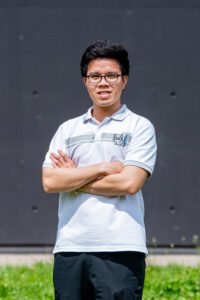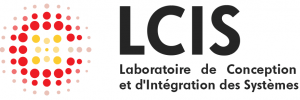Actualités
Tan Minh Hung Truong, nouveau doctorant CO4SYS
Bienvenue à Tan Minh Hung Truong, le nouveau doctorant de l’équipe CO4SYS à partir du 1er octobre 2024.
Il est encadré par Ionela PRODAN.
Son bureau est au bâtiment D, 2e étage, D215.

– Peux-tu te présenter en quelques mots ?
My full name is Tan Minh Hung Truong, but everybody calls me Hung for short. I live in Dak Lak province, which is in the central part of Vietnam. I am 23 years old. I enjoy playing sports such as football, badminton, and running. I also enjoy listening to music because it helps boost my energy when I work. Currently, I am a PhD student, and I will conduct my research with the CO4SYS team at LCIS laboratory in Valence, France.
– Quel est ton parcours (formation, expérience…) ?
In high school, the subject I was best at was physics. I have always been very interested in science and technology, so I chose Ho Chi Minh University of Technology to study engineering. My major is Mechatronics, and I graduated from university in 2024 with outstanding achievements. I have extensive experience in mechanical design, embedded programming, and designing controllers for mechanical systems. During my time at university, I also worked at several companies as an intern. I worked at Robot 3T Company, which focuses on designing and controlling robot arms. There, I learned about computer vision and machine learning to apply them to the robot arm. After that, I had the chance to do my internship at the LCIS laboratory in Valence, France. I learned many new things like ROS, SLAM, and how to integrate them to control a mobile robot in a complex environment during my internship in Valence. Because I am very keen on research, I continue to work as a PhD student to expand my knowledge about controllers, optimizations, and AI applications for a swarm of agents.
– Peux tu expliquer brièvement ton sujet de thèse?
This project lies at the intersection of bio-inspired navigation, motion planning, and multi-agent systems. It aims to develop navigation models in unknown environments that are robust, easily distributable across groups of robots or drone swarms, and capable of defining optimal trajectories. Bio-inspired navigation models seek to replicate the navigation abilities of living beings by studying the functioning of brain structures dedicated to this task. The model developed at the LCIS laboratory – Grenoble INP, Université Grenoble-Alpes, in collaboration with the LITIS laboratory (Université de Rouen-Normandie), simulates the functioning of three types of navigation-dedicated neurons to generate a two-level environmental model, featuring local navigation and a global navigation graph. These two properties allow, on the one hand, deviation from previously explored paths to seek more optimal trajectories, and on the other hand, distribution across multiple systems to distribute computing resources.
Although still in development, our navigation model has demonstrated its capabilities to map an unknown environment without being affected by drift and to guide an agent or robot using the generated model. The model has also been distributed across multiple agents or robots, enabling collective exploration and guidance. However, some aspects remain to be studied, including:
- Managing the navigation graph, particularly to ensure reliable place recognition for exploring redundant environments.
- Defining advanced exploitation models for the navigation model.
- Generating optimized trajectories for guiding physical systems by leveraging the possibilities offered by local navigation and the global navigation graph.
- Defining optimized distribution strategies for the model across groups of agents or robots to minimize inter-agent communication while promoting computational load distribution.
This thesis proposes to continue the study and development of this navigation model and explore the possibilities it offers for trajectory generation and distribution within a group of agents.
– Quelles sont les compétences que tu peux partager ?
I think I am very good at time management skills. At the beginning of the day, I usually write a list of my tasks for the current day, along with the exact times I need to finish them. Because of that, I can easily manage my work to meet their deadlines. I also categorize them into different types, such as emergency tasks that must be finished as soon as possible, or normal tasks that I can change the timing for as I want. These things seem simple, but they help me a lot to control my daily life.


